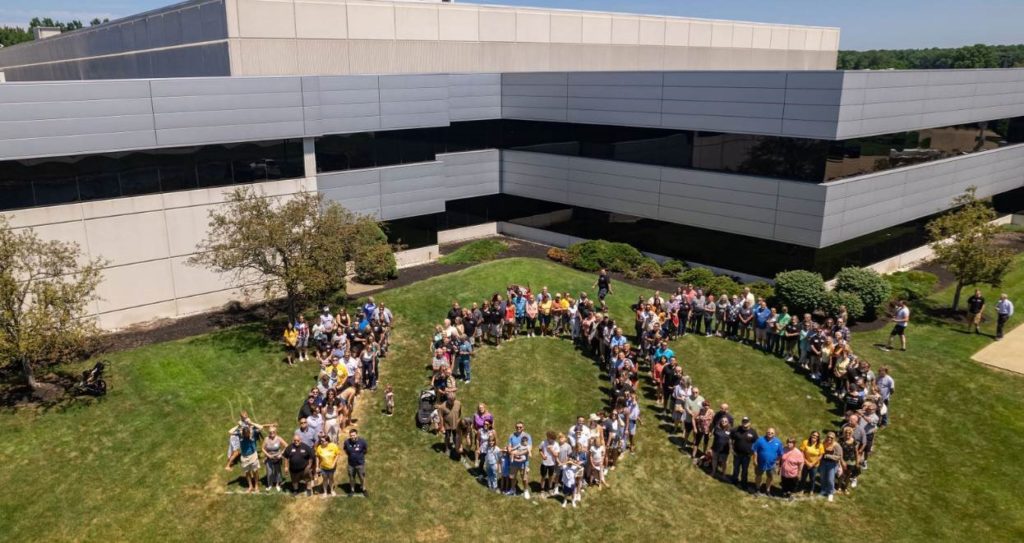
More than 100 years ago, a Bohemian diemaker named Anton J. Ruzicka made the transatlantic journey to America. He soon began to work in his trade in his adopted homeland, opening a small tool shop on the west side of Cleveland in 1922 — after changing his name to Rose to “sound more American.”
Anton was eventually joined in his new business by his son and sons-in-law.
One hundred years later, through two World Wars, the Great Depression, the economic downturn of the manufacturing-centric Midwest in the ’60s and ’70s, the financial crisis of 2008 and the COVID-19 pandemic, the company Rose founded is stronger than ever — and still family owned. Only now, that small A.J. Rose tool shop has grown to global leader in precision engineered stampings, primarily serving the auto industry, with approximately 225 employees at their Avon headquarters, another 100 at their original location, and more in India.
“We learn from our successes and mistakes,” says Anton’s grandson Mike Rose, VP of Manufacturing, of the family businesses key to longevity and success. He is one of several Rose descendants who work in the family business, including: Dan Pritchard — President, CEO; Terry Sweeney — VP, Sales & Marketing; Chris Rose — VP, IT & Quality Assurance; A.J. Rose Jr. — Director of Purchasing; and Dale Pritchard — VP, Business Development.
“We build strong relationships with our customers, and try not to veer outside what we are good at.”
A.J. Rose Manufacturing has learned to adapt to the times, which have changed more than a bit in 100 years. In the war years, they worked on bomb fuses and metal brackets.
In the post-World War II era, they found their niche: automotive parts to serve the booming American car industry.
“In the 1960s, we started getting into higher volume products for the automotive industry,” explains Rose. “We gained that business by going to customers and offering them cost savings and weight savings: American Motors (which became Chrysler), Ford, GM … we still have these relationships today.”
Today, they are adapting again, planning for changes electric vehicles will bring to the industry
“EVs are a big challenge, forcing us and other companies to go outside of our comfort zone because we are going to have to, whether it’s in 5 or 10 or 20 years. We are thinking ahead. It’s going to happen, it’s a matter of when, not if, we will move on from the internal combustion engine.”
Focusing on the automotive industry meant rapid growth for the company.
By the 1990s, “we were busting at the seams,” says Rose. They needed a new, larger home. They considered several locations, including out of state, before deciding on Avon, due its convenient location for travel to Detroit.
“Cleveland is good for manufacturing,” says Rose. “It has been very good to us. People are grounded and hard working and family-oriented here. … It’s a comeback town, we love this area and our family is here. That meant more to us than moving to Michigan.”
The opening of the headquarters in 1995 led to even more growth.
“Five years after opening we did an expansion, and in 2017 added another 30,000-square feet. We also continued to make specific products at their original Cleveland west side location. In 2005 we expanded our global footprint by starting a joint venture in Nashik, India. That location serves our customers in both Asia and Europe.”
As they added more employees, many of them also had a family connection.
“I am proud we have been able to keep A.J. Rose a family company,” says Rose. “We’re doing that with not just our family, but also families of employees, we have many families with multiple generations employed. People feel they are able to make a good living for their families with us. That’s what makes me most proud.”
A.J. Rose’s good relationships with employees, and suppliers, helped them during recent tumultuous times.
“Our toughest challenge in recent memory was back in the 2008 recession with the mortgage crisis” says Rose. “We had multiple customers go bankrupt at the same time. It was very difficult, but getting through it set us up for the success we have now.
“Everybody rallied together to get us to where we are today, customers, employees and suppliers … it was definitely a joint effort and probably a bit of luck.”
A collaborative mindset also helped during the uncertainty of COVID pandemic.
“We have really good relationships with suppliers, and those relationships paid off. When competitors were not able to get steel or other supplies, we were able to work through our relationships and come up with what we needed for customers.”
PPP loans helped them keep workers employed, and allowed them to increase wages.
The company is not immune to current workforce challenges, however.
We are trying to do what we can to bring younger people in the business who want to learn,” says Rose. “We are putting them through classes, hiring students part time, and working with Tri-C and LCC. We’re giving tours to high school kids, sponsoring robotics events … we’re doing what we can to keep kids interested in our type of business.”
One hundred years and counting.